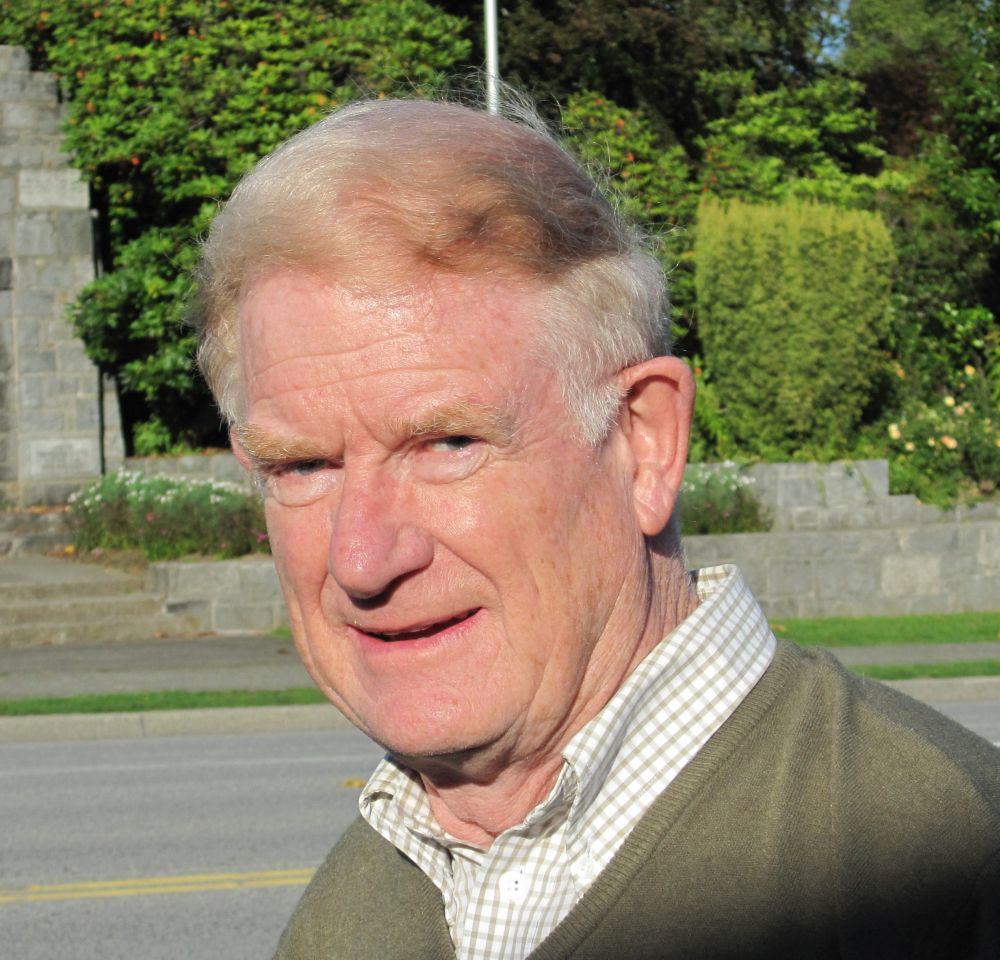COLLABORATIVE LEADERSHIP: “The Partnership’s Board of Directors is a team of community-minded and mission-focused elders. These individuals bring Experience, Knowledge and Wisdom to the Partnership’s over-arching goal of inter-generational collaboration,” says Derek Richmond, Founding Member and Secretary
Comments Off on COLLABORATIVE LEADERSHIP: “The Partnership’s Board of Directors is a team of community-minded and mission-focused elders. These individuals bring Experience, Knowledge and Wisdom to the Partnership’s over-arching goal of inter-generational collaboration,” says Derek Richmond, Founding Member and SecretaryNote to Reader:
In November 2016, the new Societies Act came into effect in British Columbia. It provided clarity regarding types of societies. This clarity helped the Partnership define its identity. The Partnership is not, and cannot be, a member-funded society. The reason is that The Partnership is funded mostly by government and provides services to government. Directors are the only formal ‘members’ and are the only ones to have voting rights.
The Partnership’s Leadership Team is comprised of Directors and non-voting Founding Members and Ex Officio Members who are available to participate in discussions relating to any ideas, issues relating to the Partnership and its direction in delivering the program for the Water Sustainability Action Plan.
Although the Partnership is a non-for-profit legal entity, the Partnership is creating a collaborative network rather than building a conventional organization. The difference in visions is fundamental.

An Introduction to the Board of Directors
The Partnership is led by a team of community-minded and mission-focused elders. Although most of the Directors are retired from their jobs, they continue their water-centric mission as volunteers. These individuals all have a career track record of leadership and pushing the envelope to do business differently. They bring Experience, Knowledge and Wisdom to the Partnership roundtable. This magical combination enhances the effectiveness of the Partnership as “the hub for a convening for action network”.
When leadership is shared among members, rather than turning to one heroic leader to guide and be the expert, it is known as collaborative leadership. It involves bringing the right people together in constructive ways with good information, such that they create authentic visions and strategies
The Partnership for Water Sustainability is Guided by a Vision for Inter-Generational Collaboration
It is the network that is the ultimate source of strength of the Partnership because the network holds the key to intergenerational collaboration. The Partnership has a primary goal, to build bridges of understanding and pass the baton from the past to the present and future. However, inter-generational collaboration is a two-way street. Minds must be open and receptive to accepting the inter-generational baton and embracing the wisdom that goes with it. When that happens, decisions will benefit from and build upon past experience.
Technical knowledge alone is not enough to resolve water challenges facing BC. Making things happen in the real world requires an appreciation and understanding of human behaviour, combined with a knowledge of how decisions are made. It takes a career to figure this out. This is the value-added dimension that the Partnership brings to the vision, mission, and goals for achieving water sustainability.

Ted van der Gulik – Founding Member, Director and President
 TED VAN DER GULIK was a founding member of the technical committee that was the genesis of The Partnership. In February 2014, he retired from the Ministry of Agriculture after 35 years of service as the Senior Engineer in the Sustainable Agriculture Management Branch in Abbotsford. While in government, Ted led the Agriculture Water Demand Project initiative for the Province. Post-retirement, he continues to have a program delivery role. “The Agriculture Water Demand Model has been instrumental in the recent development to the Agriculture and Landscape Water Calculators developed by The Partnership,” says Ted.
TED VAN DER GULIK was a founding member of the technical committee that was the genesis of The Partnership. In February 2014, he retired from the Ministry of Agriculture after 35 years of service as the Senior Engineer in the Sustainable Agriculture Management Branch in Abbotsford. While in government, Ted led the Agriculture Water Demand Project initiative for the Province. Post-retirement, he continues to have a program delivery role. “The Agriculture Water Demand Model has been instrumental in the recent development to the Agriculture and Landscape Water Calculators developed by The Partnership,” says Ted.
Richard Boase – Founding Member, Director and Vice-President
 RICHARD BOASE is the District of North Vancouver’s Section Manager, Environmental Sustainability (Operations). Richard is also Co-Chair of the Water Balance Model initiative. “Having the opportunity to continue serving the community of British Columbia as a whole through the activities of the Partnership is a rare and honourable position to be in,” says Richard from his desk in North Vancouver. “Despite the dramatic changes to our everyday lives due to COVID, the Partnership continues to deliver valuable resources and knowledge to the communities we serve. Despite the challenges faced over the past year I am extremely proud of our efforts and success stories.”
RICHARD BOASE is the District of North Vancouver’s Section Manager, Environmental Sustainability (Operations). Richard is also Co-Chair of the Water Balance Model initiative. “Having the opportunity to continue serving the community of British Columbia as a whole through the activities of the Partnership is a rare and honourable position to be in,” says Richard from his desk in North Vancouver. “Despite the dramatic changes to our everyday lives due to COVID, the Partnership continues to deliver valuable resources and knowledge to the communities we serve. Despite the challenges faced over the past year I am extremely proud of our efforts and success stories.”
Mike Tanner – Founding Member, Director and Treasurer
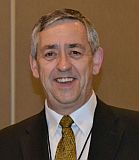 MIKE TANNER is also Chair of the waterbucket.ca website. He retired as a Senior Manager with BC Hydro’s Power Smart Program where he managed and provided direction to a team of Managers and professional staff engaged in various key marketing functions and, in delivering complex and multi-technology products and services through various programs and initiatives. Mike was an early adopter of the benefits of both energy and water conservation and, the possibilities of Watergy. “Recognizing a need for a single point of access to news, information and tools for sustainable water management in BC, we launched the waterbucket.ca website in 2005,” says Mike.
MIKE TANNER is also Chair of the waterbucket.ca website. He retired as a Senior Manager with BC Hydro’s Power Smart Program where he managed and provided direction to a team of Managers and professional staff engaged in various key marketing functions and, in delivering complex and multi-technology products and services through various programs and initiatives. Mike was an early adopter of the benefits of both energy and water conservation and, the possibilities of Watergy. “Recognizing a need for a single point of access to news, information and tools for sustainable water management in BC, we launched the waterbucket.ca website in 2005,” says Mike.
Derek Richmond – Founding Member, Director and Secretary
 DEREK RICHMOND worked in the private and public sectors for over 40 years in the UK, USA and across Canada. Derek made his last stop, before retiring, in the Comox Valley, where he served as Chair of CAVI – Convening for Action on Vancouver Island from 2011 through 2016. “Regardless of the complexity of problems with which we are faced, my passion for water resources has taught me the importance of clear visioning, partnering and cooperation with all stakeholders, and that collaboration is essential for success. While it may be tempting to believe that we can function successfully within our own silos, my experience and more recently the world-pandemic, prove otherwise. Our future success will be measured by our ability to maintain water resources in balance with ecology, economy and education,” says Derek.
DEREK RICHMOND worked in the private and public sectors for over 40 years in the UK, USA and across Canada. Derek made his last stop, before retiring, in the Comox Valley, where he served as Chair of CAVI – Convening for Action on Vancouver Island from 2011 through 2016. “Regardless of the complexity of problems with which we are faced, my passion for water resources has taught me the importance of clear visioning, partnering and cooperation with all stakeholders, and that collaboration is essential for success. While it may be tempting to believe that we can function successfully within our own silos, my experience and more recently the world-pandemic, prove otherwise. Our future success will be measured by our ability to maintain water resources in balance with ecology, economy and education,” says Derek.
Tim Pringle – Founding Member, Director and Past-President
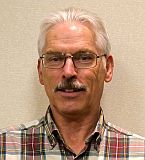 TIM PRINGLE was the founding Executive Director of the Real Estate Foundation of BC, and served in that capacity for 20 years. “A number of creative and experienced volunteers direct the work of the Partnership and help implement its programs,” says Tim. “I am privileged to work with them and to be able to pursue my passion to see BC communities adopt a more integrated approach to stewardship of land and water. The Partnership’s goal is to help communities implement designing with nature strategies as a basic step to managing settlement change in balance with ecology makes perfect sense.”
TIM PRINGLE was the founding Executive Director of the Real Estate Foundation of BC, and served in that capacity for 20 years. “A number of creative and experienced volunteers direct the work of the Partnership and help implement its programs,” says Tim. “I am privileged to work with them and to be able to pursue my passion to see BC communities adopt a more integrated approach to stewardship of land and water. The Partnership’s goal is to help communities implement designing with nature strategies as a basic step to managing settlement change in balance with ecology makes perfect sense.”
Peter Law – Founding Member and Director
 PETER LAW was a Senior Biologist with the Ministry of Environment. In addition to his Partnership responsibilities, Peter is President of the Mid Vancouver Island Habitat Enhancement Society. “My principle interest is to promote Water Sustainability as it pertains to the restoration of our small streams and how this is linked to maintaining a watershed’s health. While with the Ministry of Environment for 30-plus years, I became acutely aware of how our existing land development practices are causing natural systems to degrade. I have supported the need for ‘change’ through educational approaches promoted by The Partnership to Design with Nature.”
PETER LAW was a Senior Biologist with the Ministry of Environment. In addition to his Partnership responsibilities, Peter is President of the Mid Vancouver Island Habitat Enhancement Society. “My principle interest is to promote Water Sustainability as it pertains to the restoration of our small streams and how this is linked to maintaining a watershed’s health. While with the Ministry of Environment for 30-plus years, I became acutely aware of how our existing land development practices are causing natural systems to degrade. I have supported the need for ‘change’ through educational approaches promoted by The Partnership to Design with Nature.”
Ray Fung – Founding Member and Director
 RAY FUNG was formerly the Director of Engineering & Transportation with the District of West Vancouver, a position he held for 12 years. Ray previously chaired two of the Partnership’s original incarnations, namely: the Water Sustainability Committee of the BCWWA (2003-2008) and the BC Green Infrastructure Partnership (2008-2011). Reflecting on the 10 year anniversary of the Partnership, Ray stated, “Water sustainability remains a key challenge related to climate change. While the Partnership has accomplished much, this imperative has the potential to inspire many more actions in the years ahead.”
RAY FUNG was formerly the Director of Engineering & Transportation with the District of West Vancouver, a position he held for 12 years. Ray previously chaired two of the Partnership’s original incarnations, namely: the Water Sustainability Committee of the BCWWA (2003-2008) and the BC Green Infrastructure Partnership (2008-2011). Reflecting on the 10 year anniversary of the Partnership, Ray stated, “Water sustainability remains a key challenge related to climate change. While the Partnership has accomplished much, this imperative has the potential to inspire many more actions in the years ahead.”


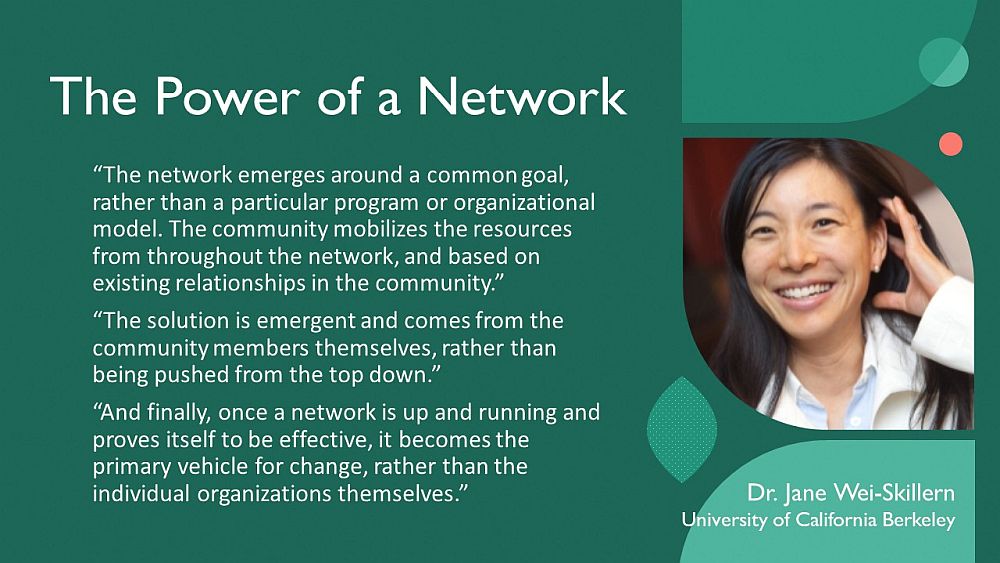
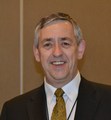 “The Partnership for Water Sustainability is incorporated as a non-for-profit society and therefore is a legal entity, yet operationally it functions as a network rather than as an organization in any conventional sense. The work of The Partnership is guided by a network way-of-thinking that reflects our genesis as a water-centric technical committee in the 1990s,” states Mike Tanner, a Founding Director and Partnership Treasurer. Prior to his retirement from BC Hydro, Mike was a senior manager responsible for delivering the Power Smart program.
“The Partnership for Water Sustainability is incorporated as a non-for-profit society and therefore is a legal entity, yet operationally it functions as a network rather than as an organization in any conventional sense. The work of The Partnership is guided by a network way-of-thinking that reflects our genesis as a water-centric technical committee in the 1990s,” states Mike Tanner, a Founding Director and Partnership Treasurer. Prior to his retirement from BC Hydro, Mike was a senior manager responsible for delivering the Power Smart program. “In the pre-society era of The Partnership, we were primarily an inter-governmental committee. We brought together representatives of many organizations who then worked collaboratively for the greater good in delivering the
“In the pre-society era of The Partnership, we were primarily an inter-governmental committee. We brought together representatives of many organizations who then worked collaboratively for the greater good in delivering the 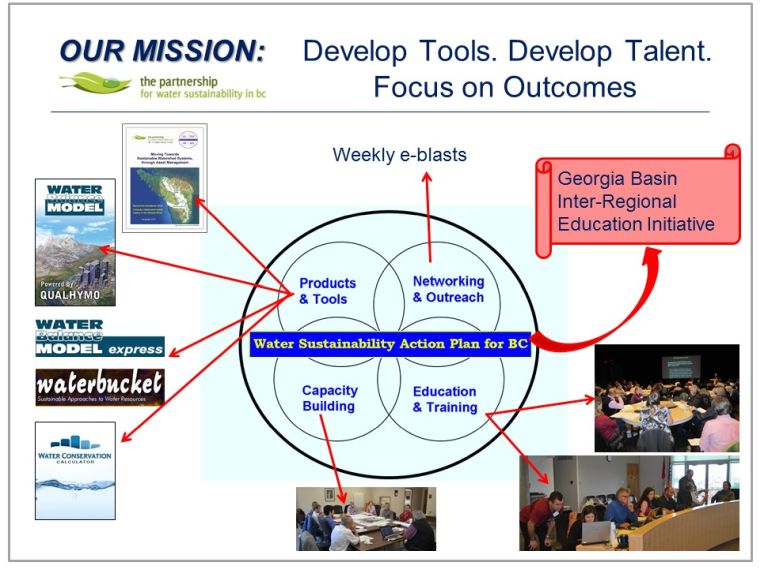
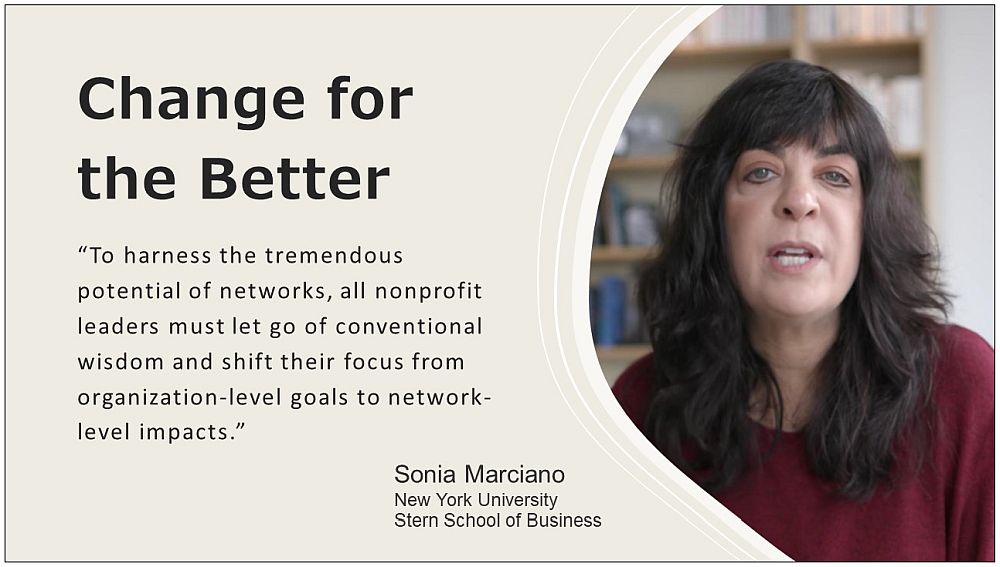
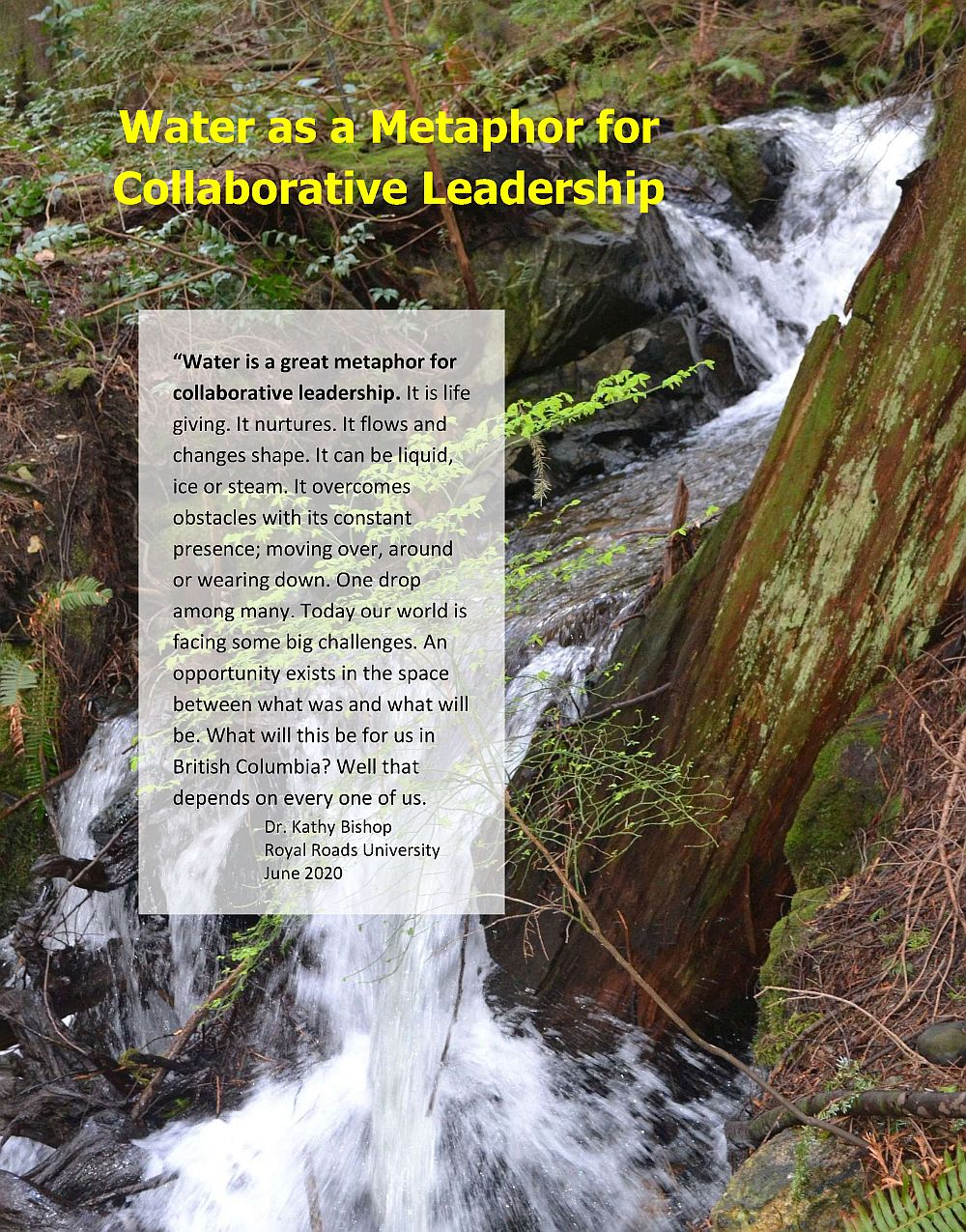
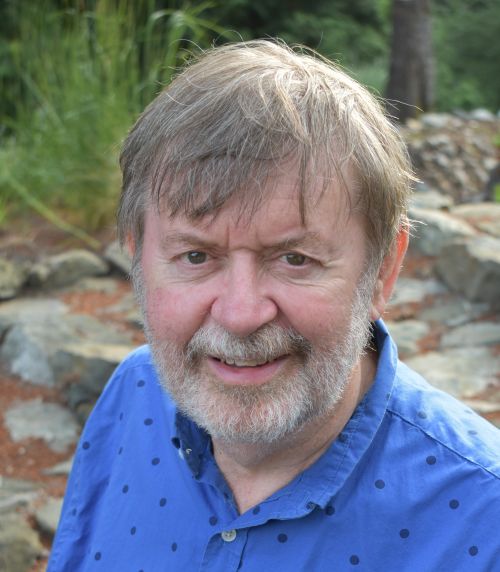 “When leadership is shared among members, rather than turning to one heroic leader to guide and be the expert, it is known as collaborative leadership. It involves bringing the right people together in constructive ways with good information, such that they create authentic visions and strategies for addressing the shared concerns of their organizations and community. Thus, collaborative leadership is an apt description of the Partnership Leadership Team and our approach in collaborating with individuals and organizations,” explains Kim Stephens, Executive Director.
“When leadership is shared among members, rather than turning to one heroic leader to guide and be the expert, it is known as collaborative leadership. It involves bringing the right people together in constructive ways with good information, such that they create authentic visions and strategies for addressing the shared concerns of their organizations and community. Thus, collaborative leadership is an apt description of the Partnership Leadership Team and our approach in collaborating with individuals and organizations,” explains Kim Stephens, Executive Director.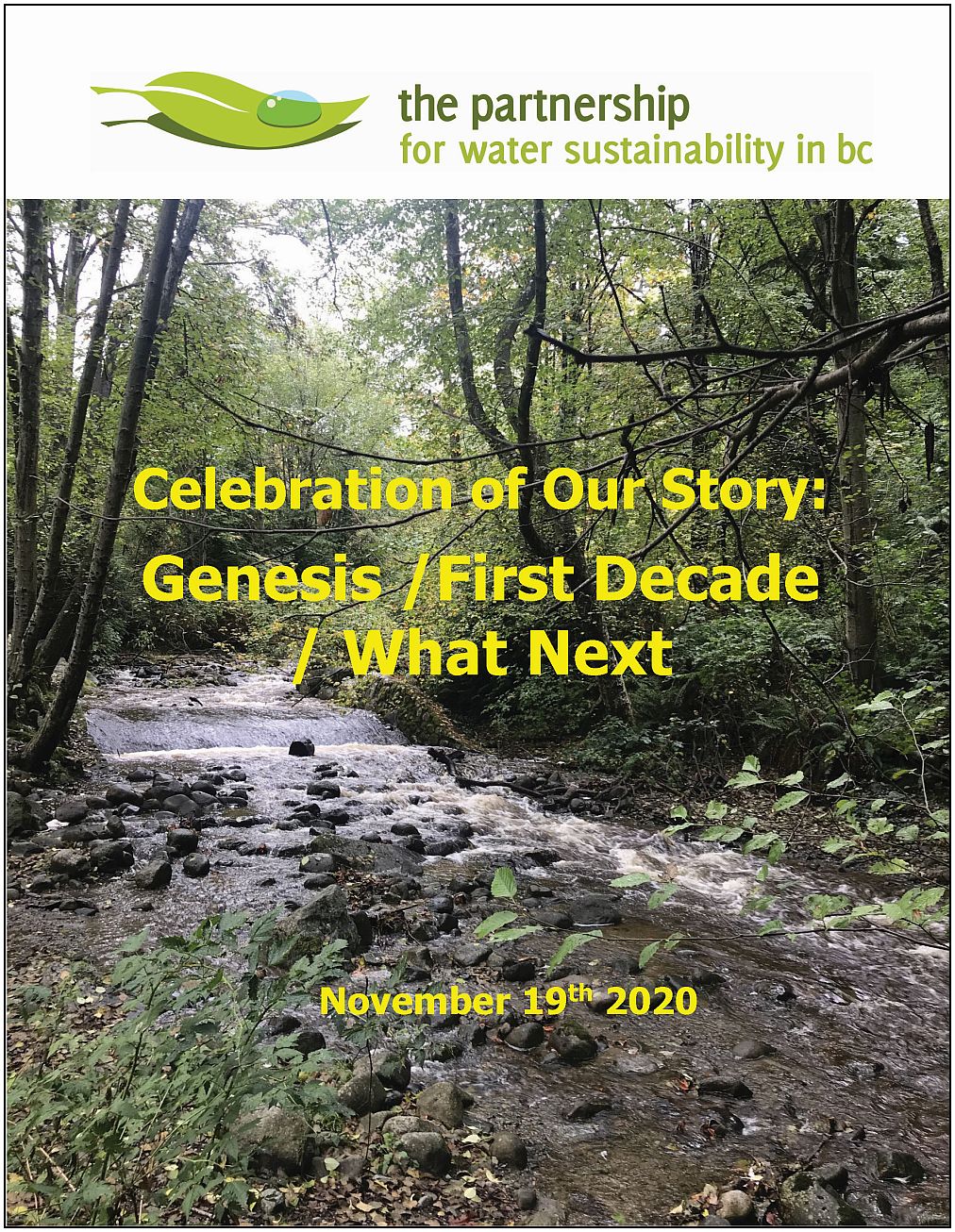

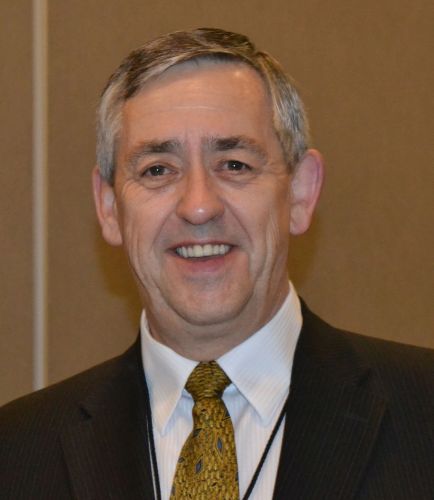 “Membership on the Partnership Leadership Team is based on feeding back Water Sustainability Action Plan outcomes into member organizations. When individuals are invited to join the Partnership Leadership Team, it is because there is ‘a job to be done’. Invitations are restricted to individuals who are willing to provide energy and commitment to implement Action Plan elements,” explains Mike Tanner, Founding Director and Treasurer.
“Membership on the Partnership Leadership Team is based on feeding back Water Sustainability Action Plan outcomes into member organizations. When individuals are invited to join the Partnership Leadership Team, it is because there is ‘a job to be done’. Invitations are restricted to individuals who are willing to provide energy and commitment to implement Action Plan elements,” explains Mike Tanner, Founding Director and Treasurer. “The Action Plan is a partnership umbrella for an array of on-the-ground initiatives. It comprises interconnected program elements that provide local governments and practitioners with the tools and understanding that will help them better manage land and water resources.”
“The Action Plan is a partnership umbrella for an array of on-the-ground initiatives. It comprises interconnected program elements that provide local governments and practitioners with the tools and understanding that will help them better manage land and water resources.”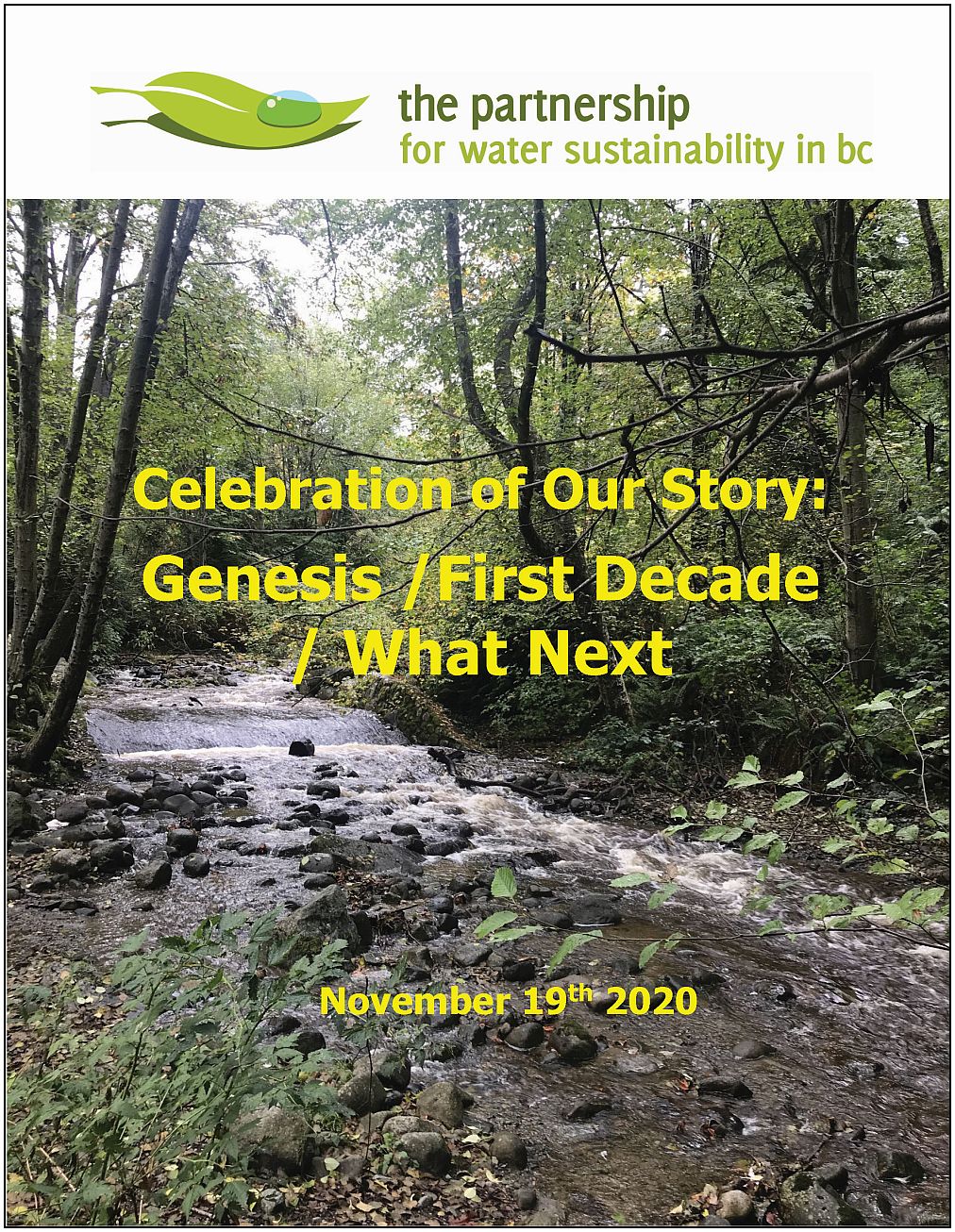
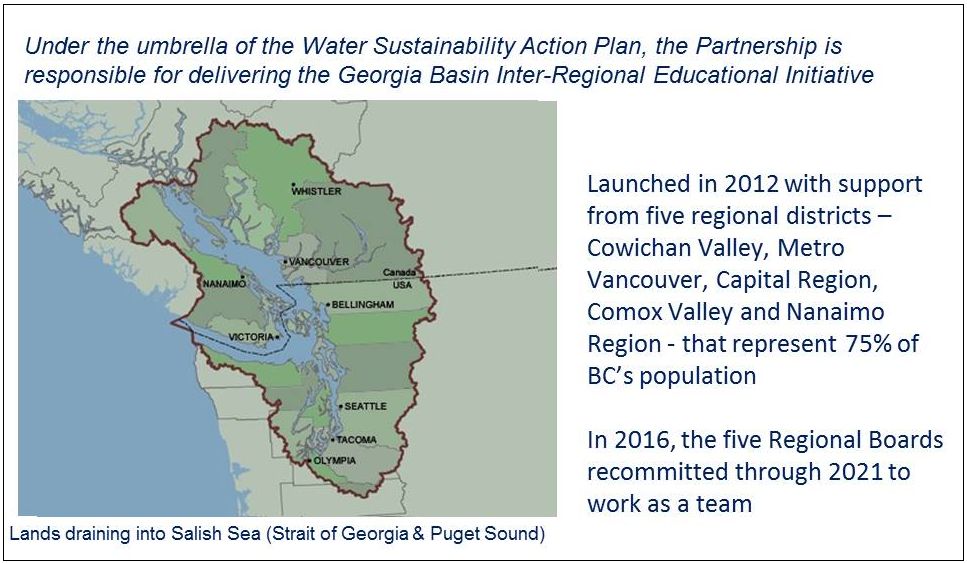



 “
“
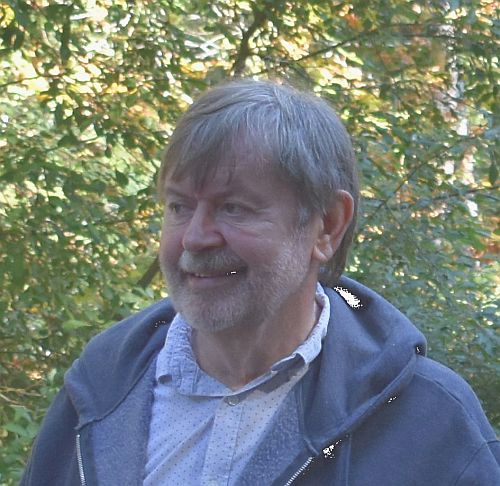 “In 2020, the COVID pandemic changed everything and created a new reality for everyone on Planet Earth. Until there is a vaccine, mass gatherings are not allowed in British Columbia, by order of the Provincial Health Officer. Thus, events such as the
“In 2020, the COVID pandemic changed everything and created a new reality for everyone on Planet Earth. Until there is a vaccine, mass gatherings are not allowed in British Columbia, by order of the Provincial Health Officer. Thus, events such as the 
 “COVID has changed and challenged how we do outreach and peer-based education. In the age of COVID, how does one inspire an audience over a computer? Addressing this existential challenge was our starting point for re-imagining the third in the Vancouver Island Water Stewardship Symposia Series as a virtual event. David stepped up and opened our minds as to what could be. This is the moment, he said, to leverage technology and reach far beyond those in the symposium room. Be bold, he urged.”
“COVID has changed and challenged how we do outreach and peer-based education. In the age of COVID, how does one inspire an audience over a computer? Addressing this existential challenge was our starting point for re-imagining the third in the Vancouver Island Water Stewardship Symposia Series as a virtual event. David stepped up and opened our minds as to what could be. This is the moment, he said, to leverage technology and reach far beyond those in the symposium room. Be bold, he urged.”
 In 2003, Ray Fung was one of the architects of the Water Sustainability Action Plan for British Columbia. He created the graphic that illustrates the “BC process” for moving from awareness to action in order to achieve water sustainability.
In 2003, Ray Fung was one of the architects of the Water Sustainability Action Plan for British Columbia. He created the graphic that illustrates the “BC process” for moving from awareness to action in order to achieve water sustainability.

 “In 2020, his contributions were crucial to sustaining our land and water stewardship message in a time of global pandemic. His efforts made possible Watershed Moments, the Video Trilogy Series. To say we could not have done it without David is an understatement; we did not even know we were not doing it until he came along and challenged us to be bold and seize the moment.”
“In 2020, his contributions were crucial to sustaining our land and water stewardship message in a time of global pandemic. His efforts made possible Watershed Moments, the Video Trilogy Series. To say we could not have done it without David is an understatement; we did not even know we were not doing it until he came along and challenged us to be bold and seize the moment.”